Highlights and access methods of Koyasan (Wakayama Prefecture)
English | Japanese
Koyasan(Mount Koya) is a sacred site of Shingon Buddhism located in the northern part of Wakayama Prefecture. It was founded in 816 by Kobo Daishi as a meditation dojo. Located in a basin at an altitude of about 850m and surrounded by mountains, the area is referred to as Koyasan because the mountain name of Kongobuji Temple is Koyasan. In addition to many famous sites such as Okunoin and Danjo Garan, Mount Koya offers the experience of staying in temple lodgings, known as shukubo, where visitors can partake in shojin-ryori and engage in activities like sutra copying.
In this article, we will explain the attractions of Koyasan in Wakayama Prefecture and how to access it for those who are traveling to Japan from overseas.
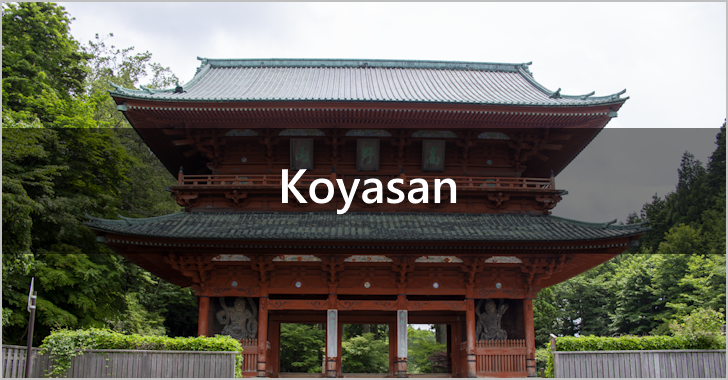
(Last modified: )
(Prefecture : Wakayama , Category : Townscapes and Area)
Table of contents
Highlights of Koyasan
We will introduce the highlights of Koyasan.
Okunoin
Okunoin is one of the two sacred sites of Koyasan. The term 'Okunoin' refers to the entire area from Ichi-no-hashi bridge, which is the entrance, to the mausoleum of Kobo Daishi. The approach is lined with gravestones and memorial pagodas of many notable warlords, set amid a cedar grove that boasts trees up to a thousand years old. Proceeding down the approach and crossing the Gobyo Bridge, you will find the mausoleum where Kobo Daishi Kukai entered eternal meditation, and the Lantern Hall.
For more detailed information about Koyasan Okunoin, please see 「Complete guide to the highlights of Koyasan Okunoin」.
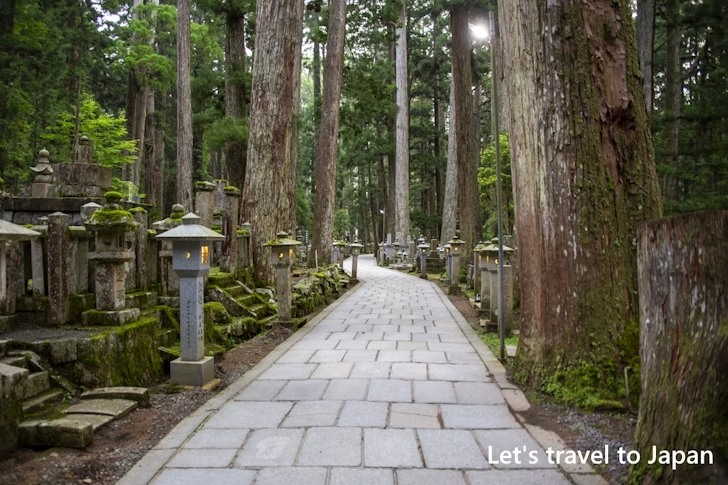

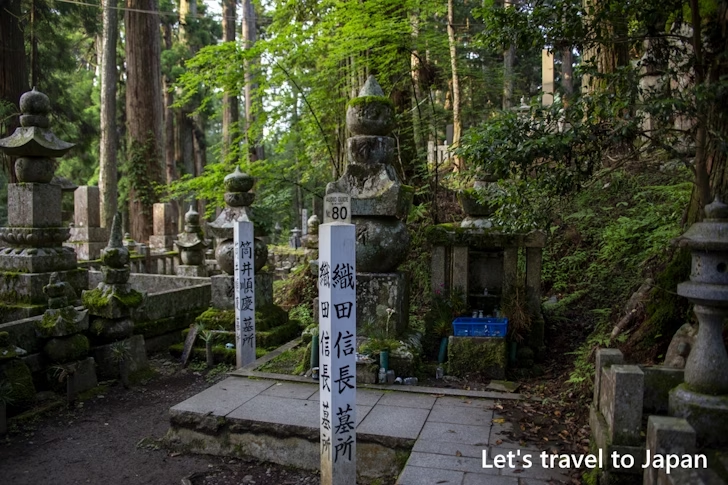
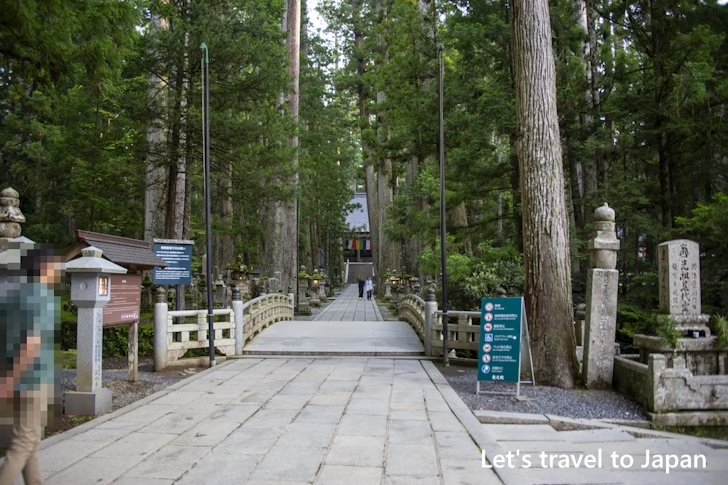
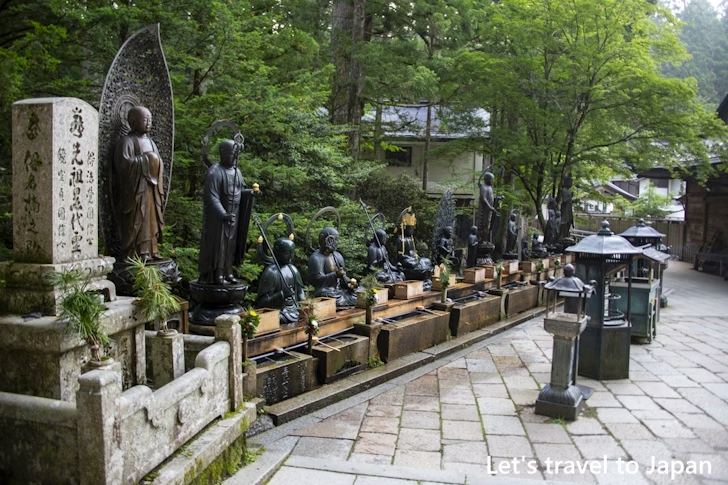
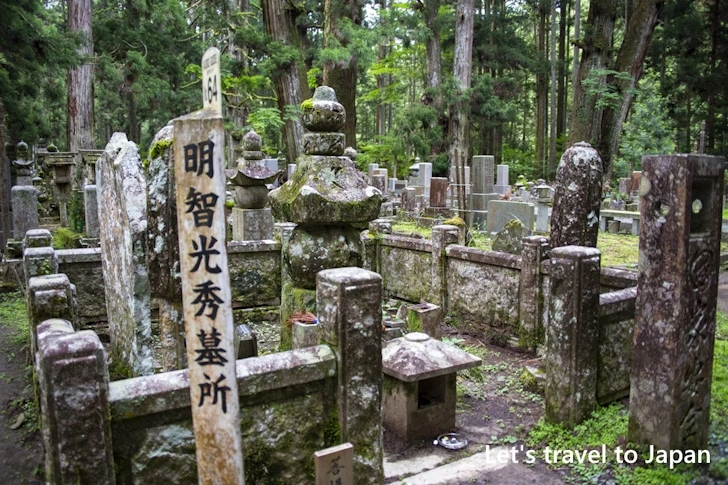
Sohonzan Kongobuji
The Sohonzan Kongobu-ji Temple is a temple located in Koyasan and is the head temple of the Koyasan Shingon Buddhism. Before the Meiji period, the entire area of Koyasan was referred to as Kongobuji. However, in the second year of the Meiji period, Seigan-ji Temple and Kouzan-ji Temple were merged, establishing the name of a single temple, Sohonzan Kongobu-ji Temple. Seigan-ji Temple was a temple erected by Toyotomi Hideyoshi to mourn the soul of his mother, Omandokoro. Positioned nearly at the center of Koyasan, it is also the residence of the chief abbot of Kongobuji.
For more detailed information about Koyasan Sohonzan Kongobuji, please see 「Complete guide to the highlights of Koyasan Sohonzan Kongobuji」.
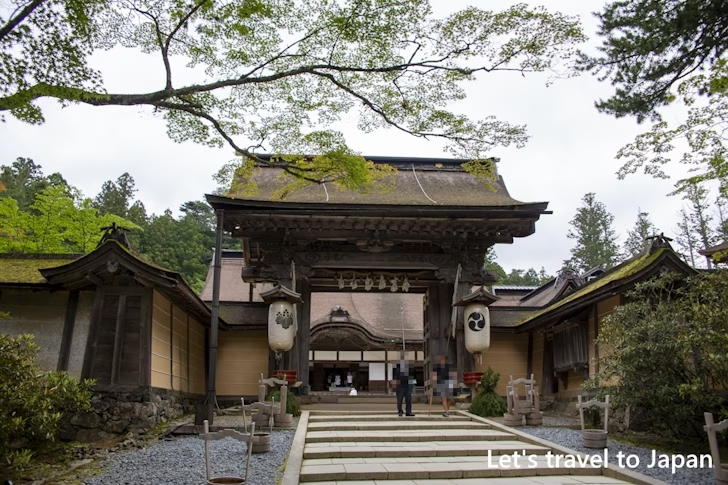
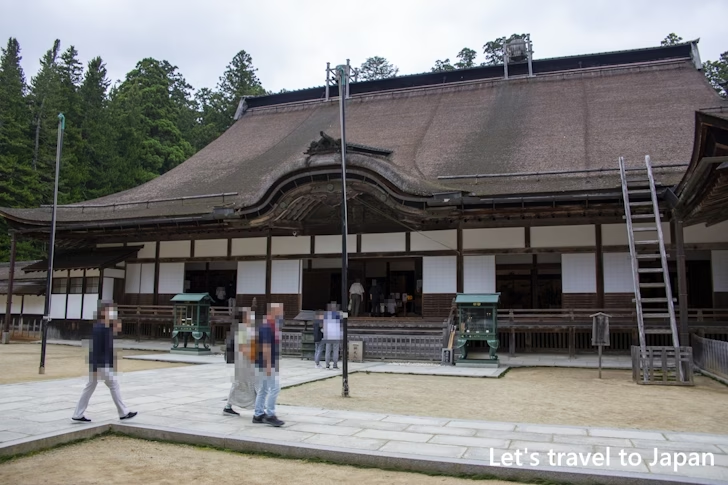
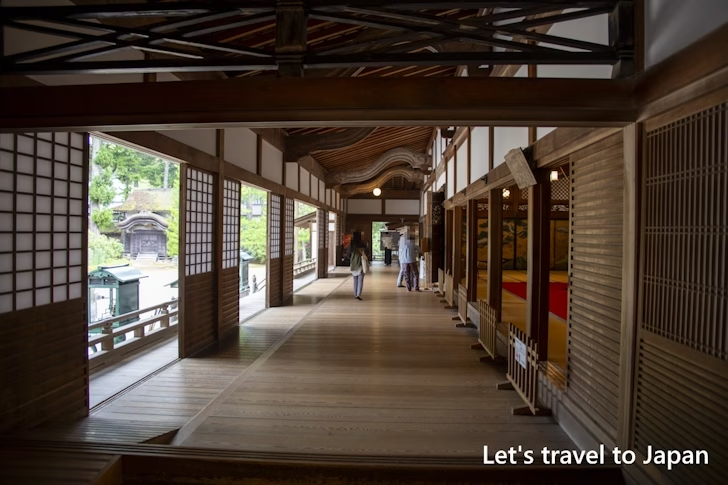
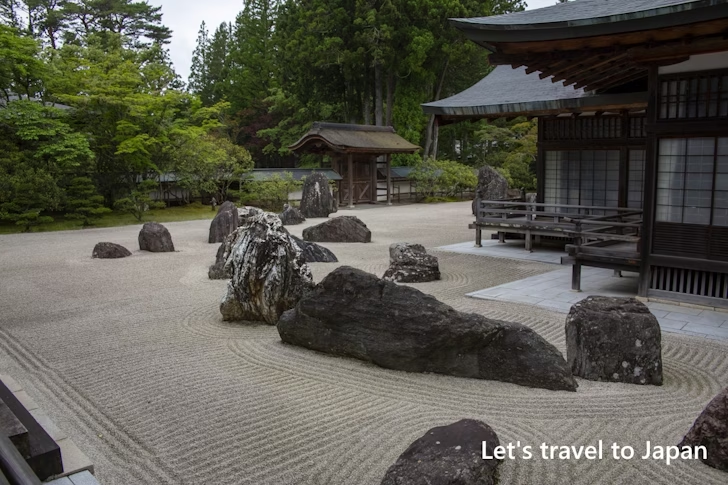
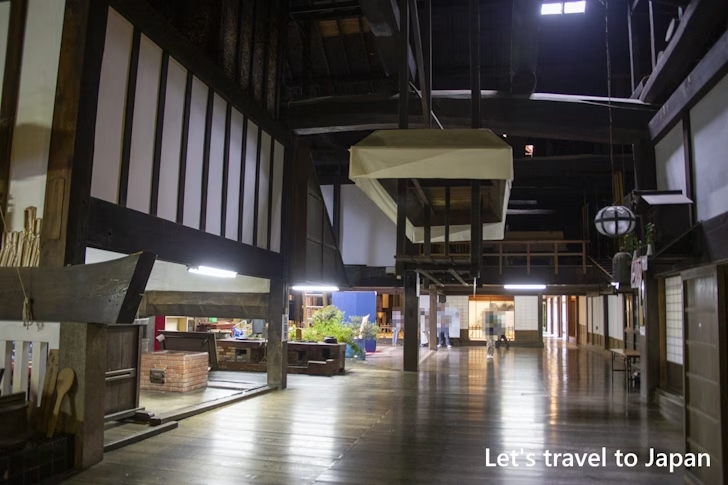
Danjo Garan
Danjo Garan is one of the two sacred sites of Koyasan. It is an important place where Kobo Daishi first started construction when he founded Koyasan. There are 19 buildings in the precincts, including Konpon Daito, the symbol of Koyasan, and its paired Sai-to, Kondo, the main hall where important events are held, and Fudodo, which is designated as a national treasure.
For more detailed information about Koyasan Danjo Garan, please see 「Complete guide to the highlights of Koyasan Danjo Garan」.
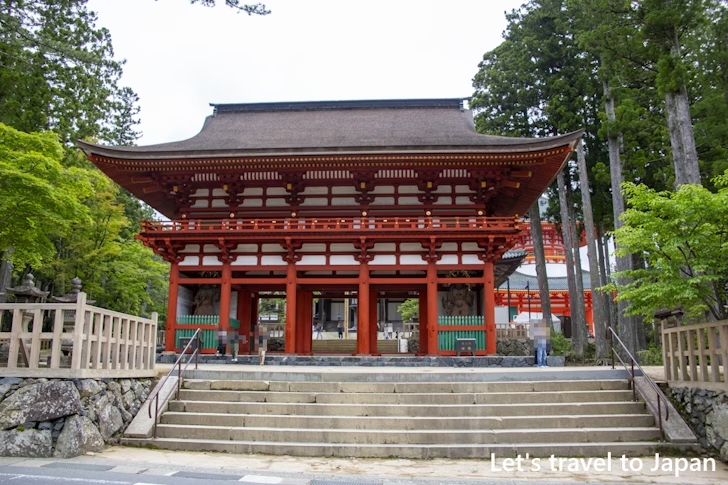
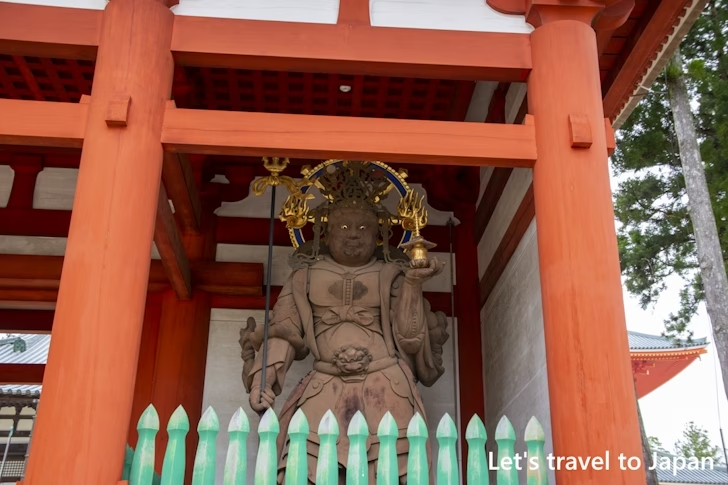
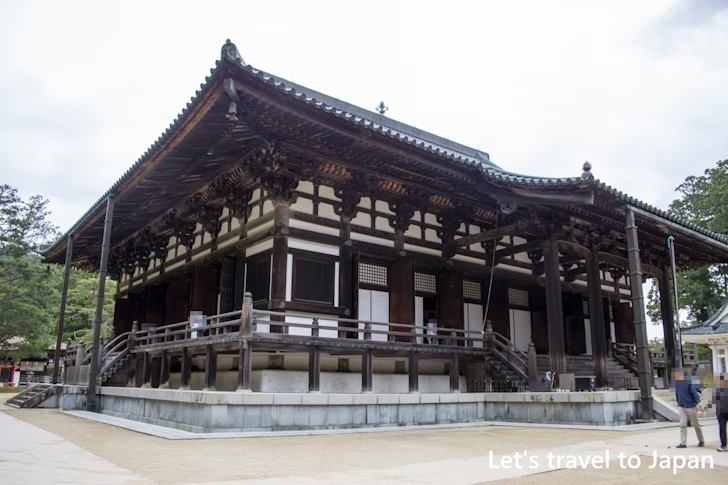
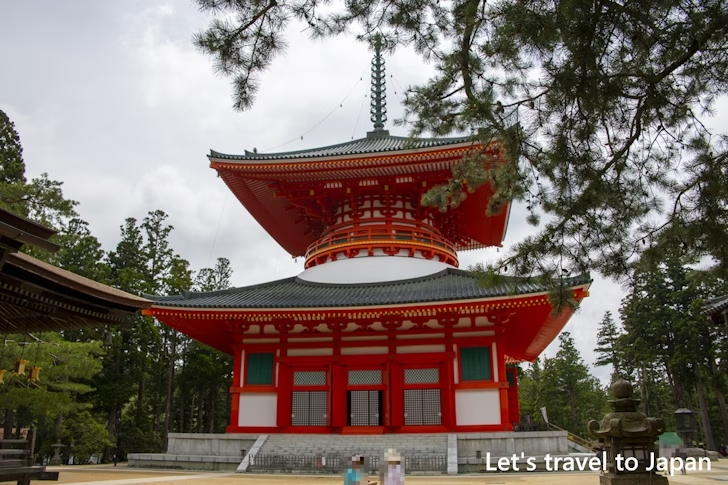
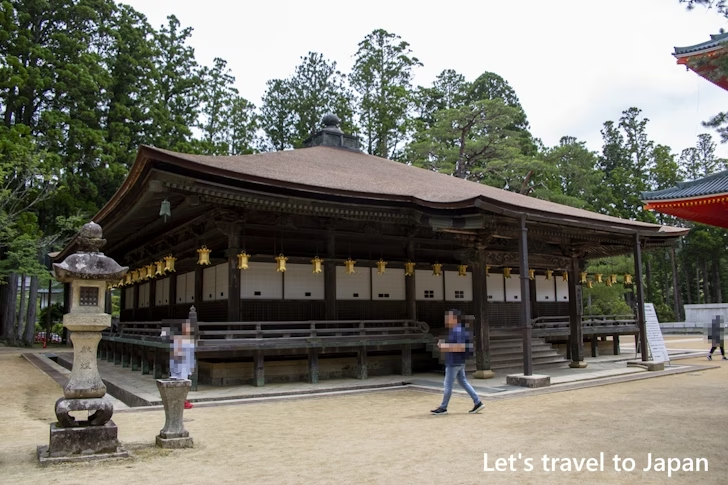
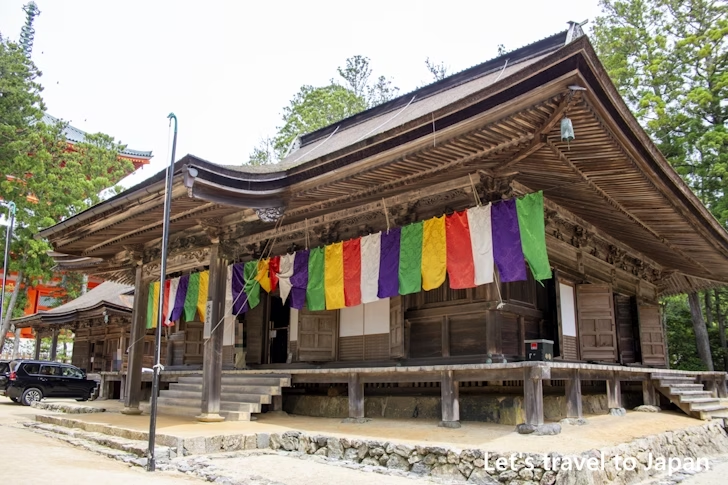
Kongo Sanmaiin
Kongosanmai-in was founded by Hojo Masako to mourn the passing of Minamoto no Yoritomo, the first shogun of the Kamakura Shogunate. Later, in order to mourn the third shogun, Minamoto no Sanetomo, various structures such as the Tahoto were built, and the name was changed to the current Kongosanmai-in. Valuable structures and Buddha statues from the early Kamakura period, such as the national treasure Tahoto and the important cultural property Kyozo, remain from the time of its original construction.
For more detailed information about Koyasan Kongo Sanmaiin, please see 「Complete guide to the highlights of Koyasan Danjo Garan」.
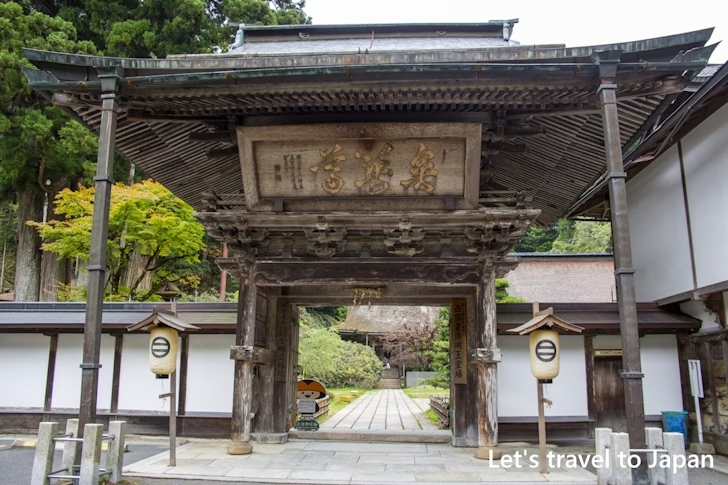
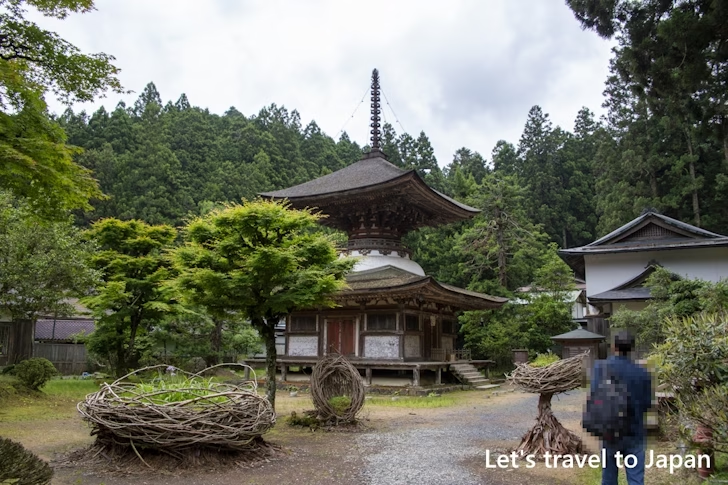
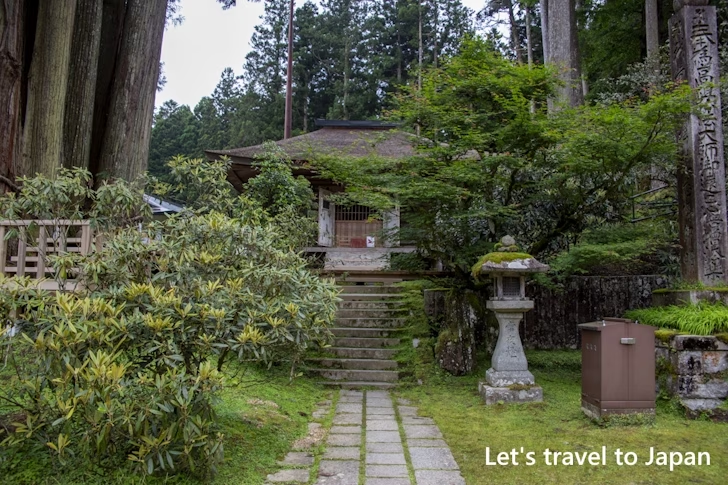
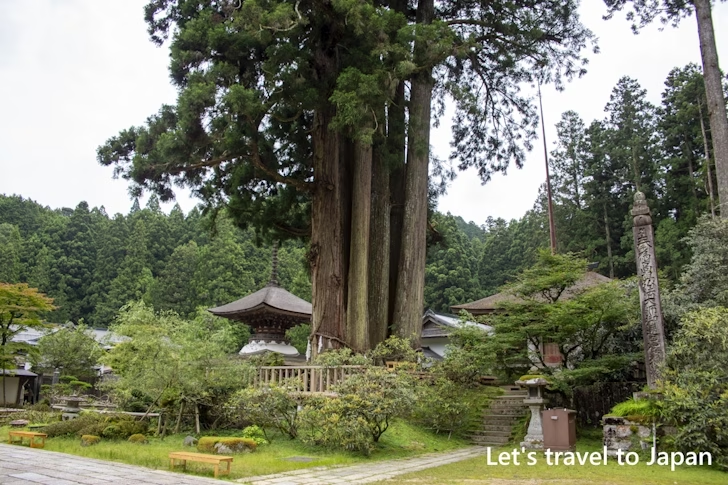
Daimon
Daimon (officially known as Kongobu-ji Daimon) is the main gate of Koyasan. It has been rebuilt after being destroyed by fires and lightning strikes. The current gate was reconstructed in 1705. It is a red lacquered gate 25m in height and 21m in width. The statues of Kongo Rikishi on either side of the gate are the second largest in Japan, following those at the south gate of Todai-ji in Nara.
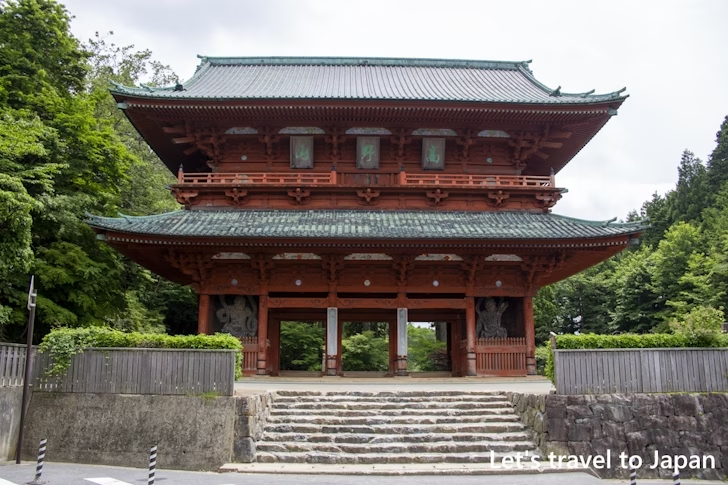
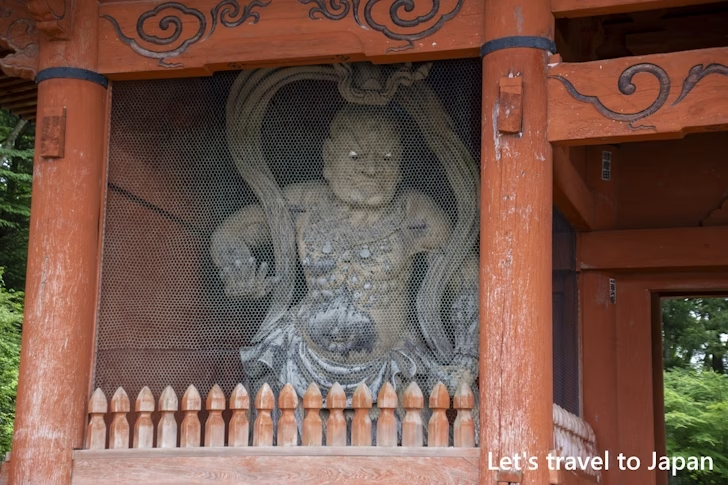
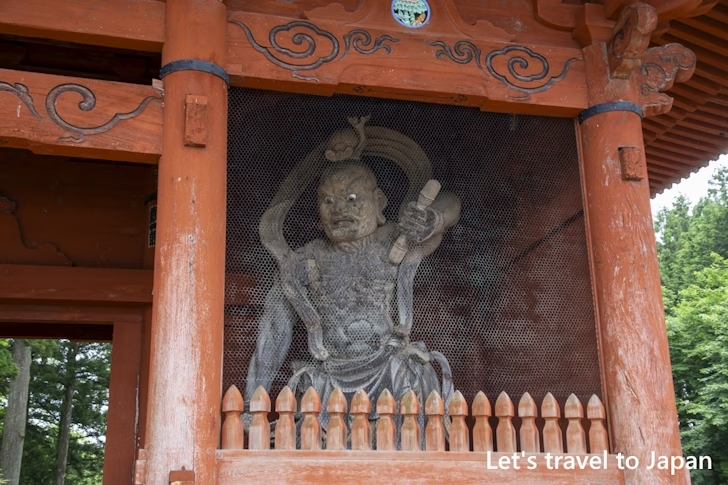
Nyonindo
The Nyonindo was built as a place of worship for women. Since women were previously prohibited from entering Koyasan, Nyonindo were built at each of the seven entrances to the pilgrimage route.
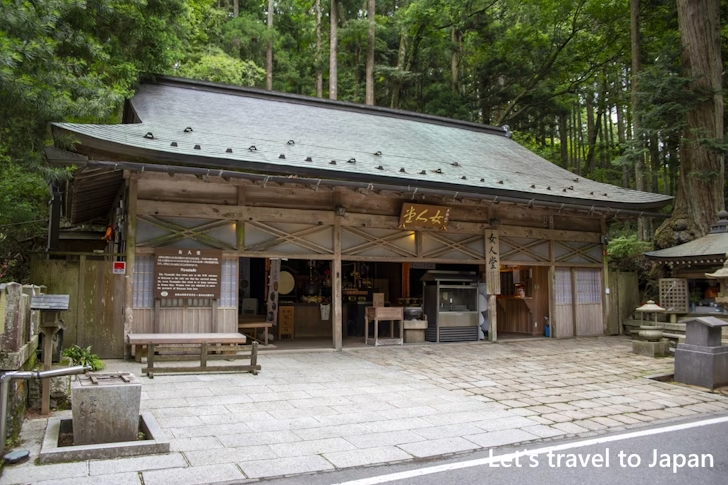
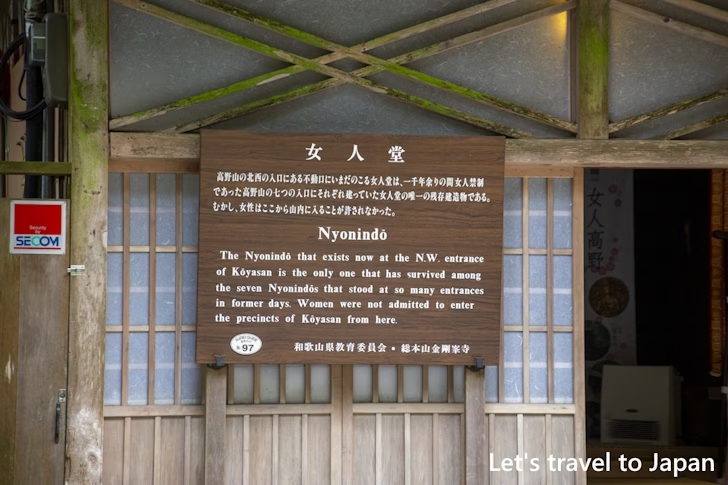
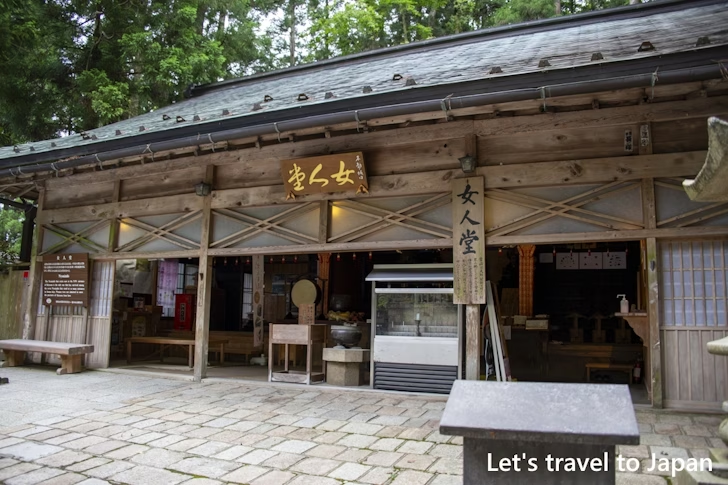
The only Nyonindo remaining today is the one at Fudozaka entrance.
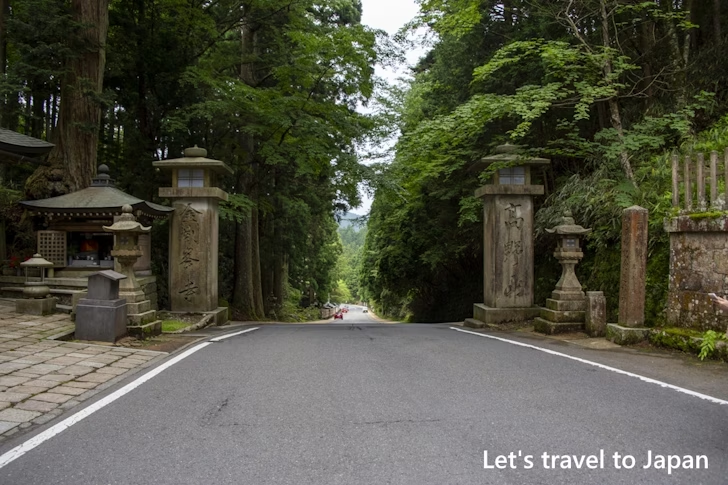
Shukubo(temple lodgings)
In Koyasan, there are no hotels or inns; instead, visitors stay in temples called "shukubo." There are 117 sub-temples in Koyasan, and 51 of them can be used as shukubo for accommodations.
Eko-in:
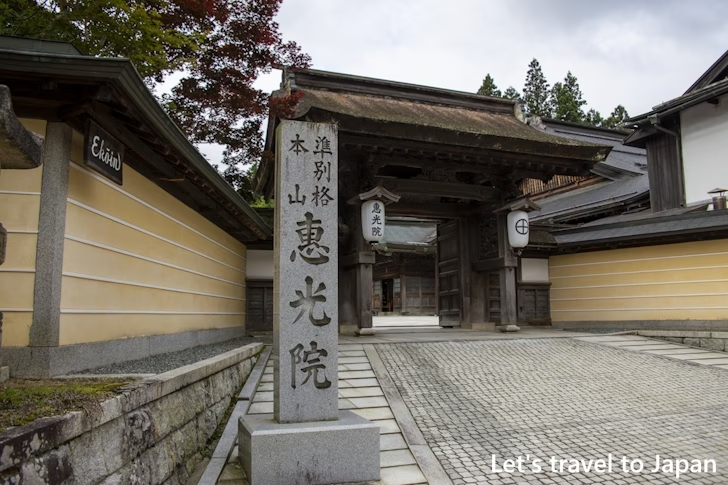
Fudo-in:
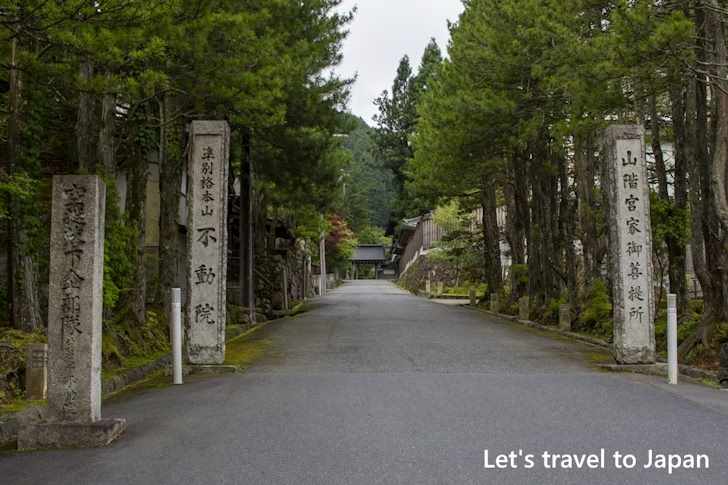
Shojoshin-in:
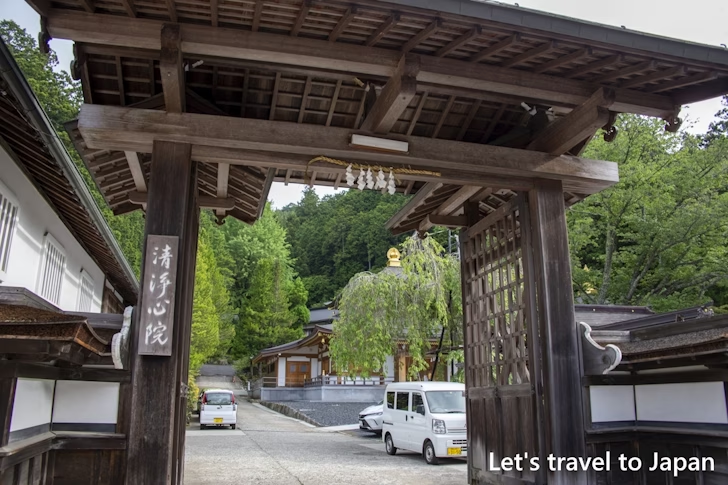
Rengejo-in:
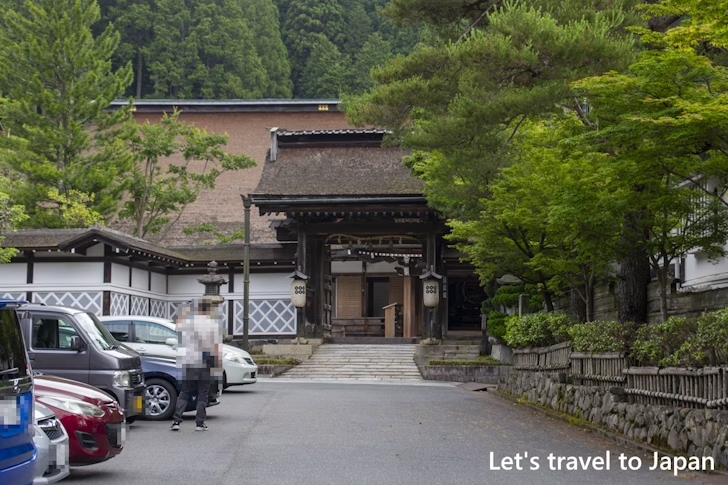
Guests can enjoy Buddhist cuisine, experience activities such as copying sutras and Ajikan meditation, and in some cases, participate in the morning rituals. As each shukubo offers different experiences, if you are planning to stay in Koyasan, please find the one that suits you best.
Ichijo-in:
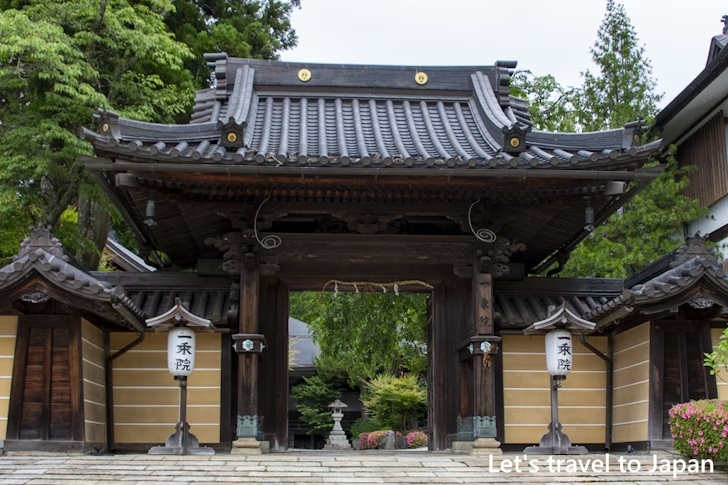
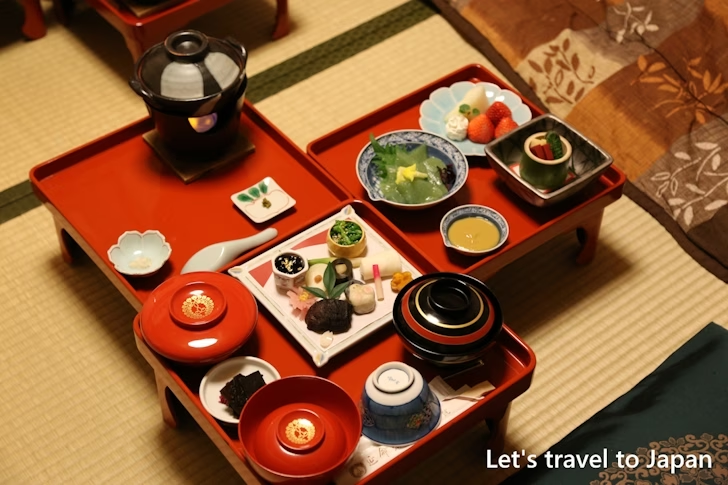
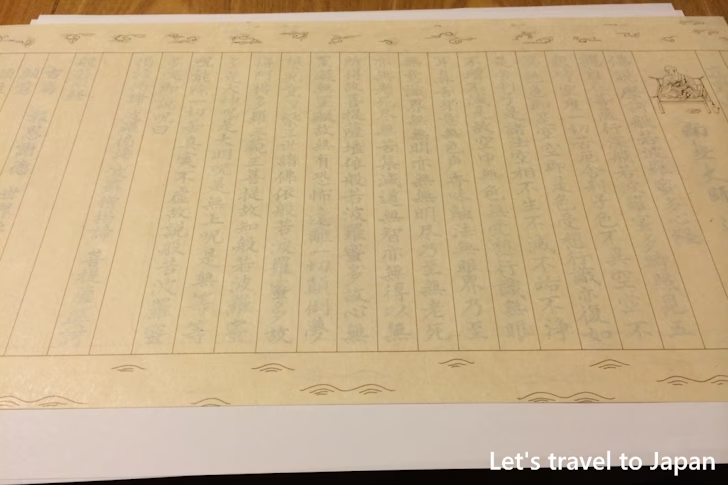
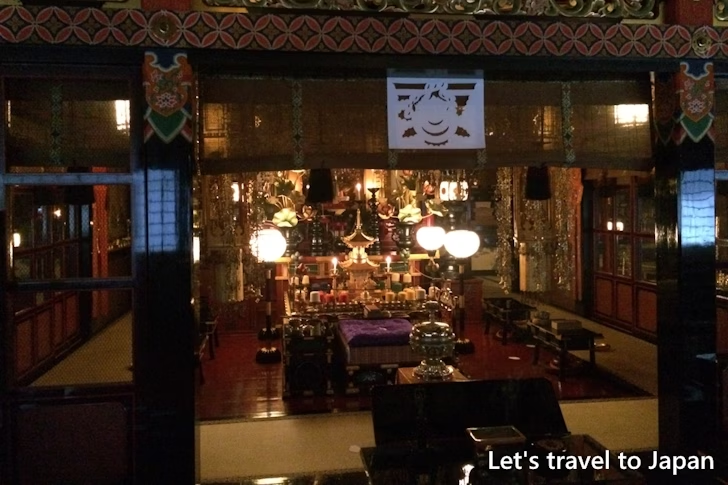
Koyasan Reihokan Museum
The Koyasan Reihokan Museum was established in 1921 as a facility to preserve and display the precious cultural heritage of Koyasan. Currently, it houses 21 national treasures and 148 important cultural properties, among approximately 50,000 invaluable cultural assets including Buddhist statues and paintings. For details on the items in the collection, please refer to the 「Collection Introduction」.
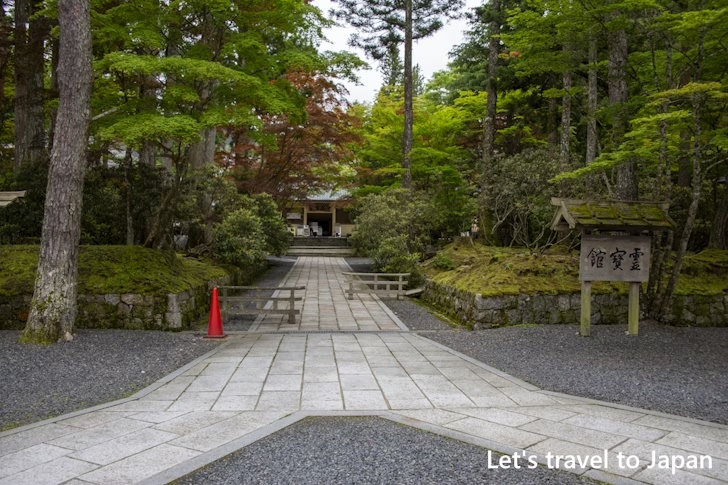
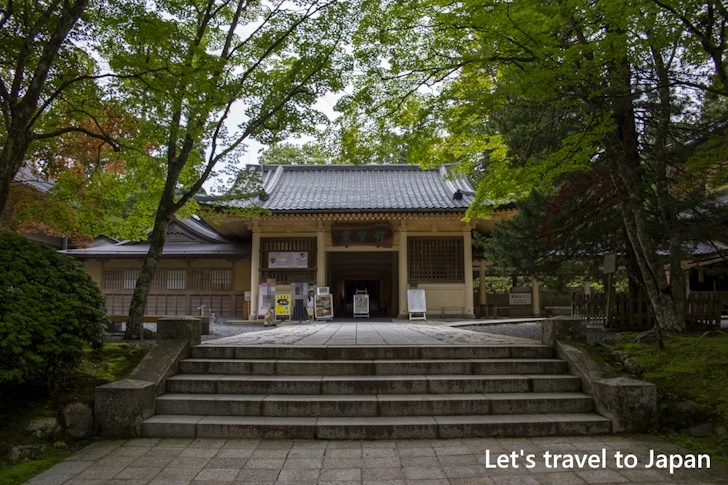
Tokugawa Clan Mausoleum
The Tokugawa Clan Mausoleum is the Tamaya for Ieyasu Tokugawa, the first shogun of the Edo shogunate, and Tokugawa Hidetada, the second shogun. It was established in 1643 by the third shogun, Iemitsu Tokugawa, and is designated as a national important cultural property.
The visiting hours for the Tokugawa Family Mausoleum are 08:30 to 17:00, and the admission fee for adults (junior high school students and above) is 200 yen.
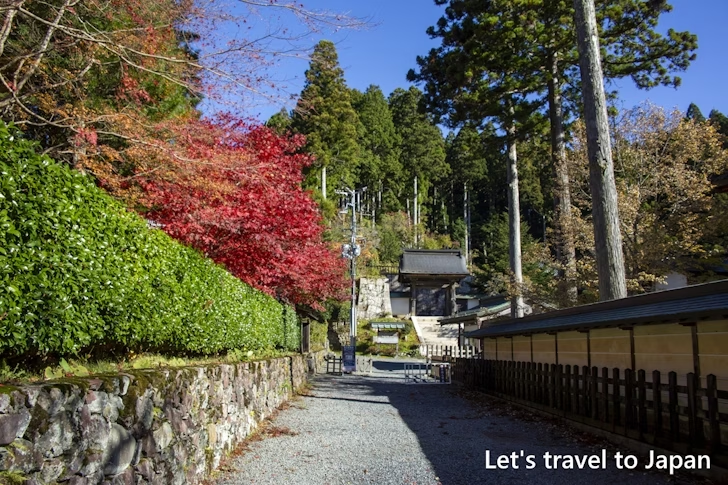
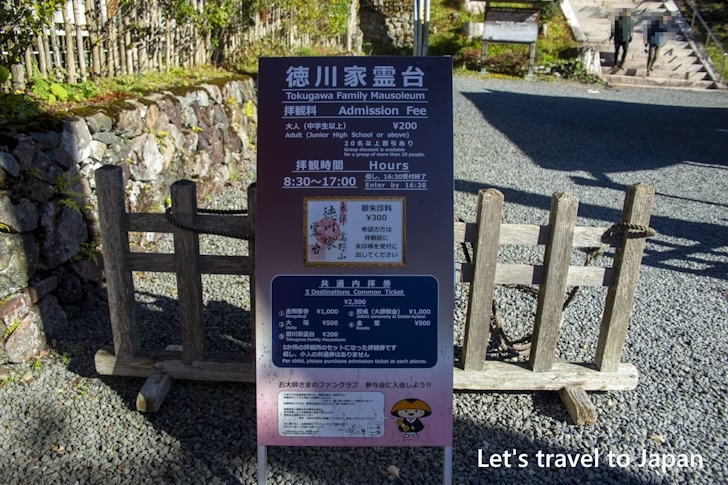
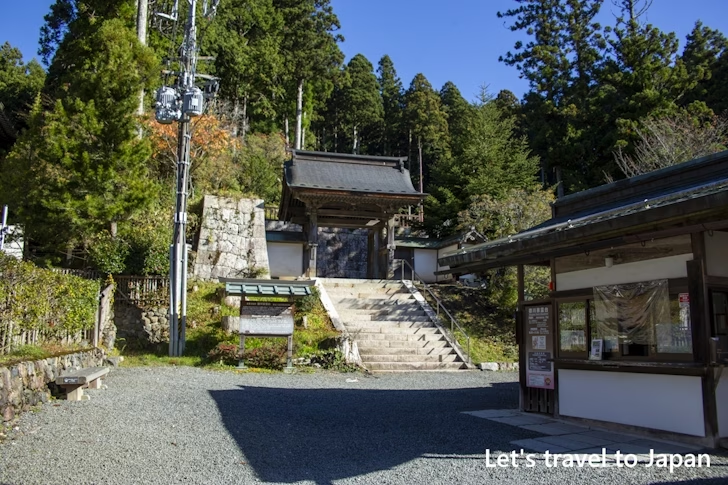
The mausoleum on the right side, as you face them, is for Ieyasu Tokugawa. Since Ieyasu was enshrined as a deity after his death, there is a torii gate in front of his mausoleum.
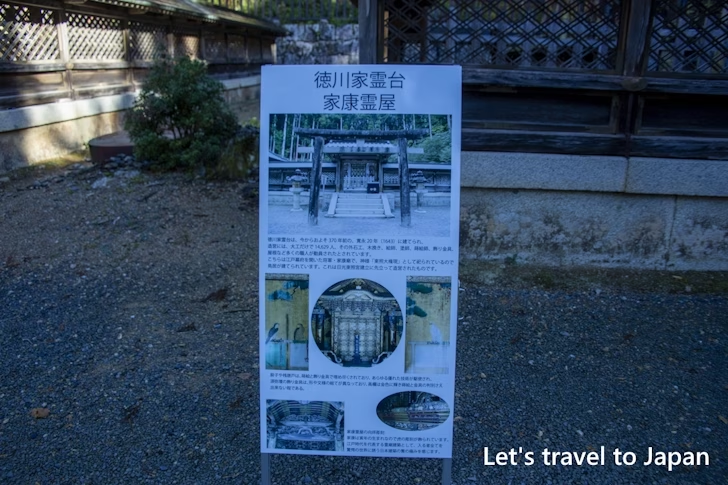
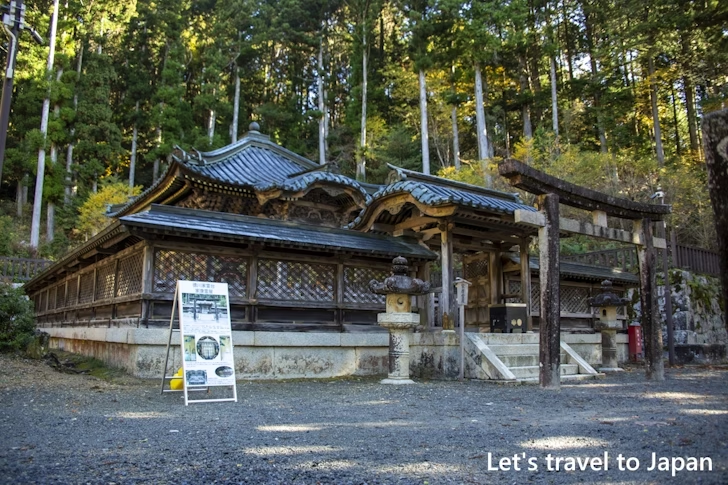
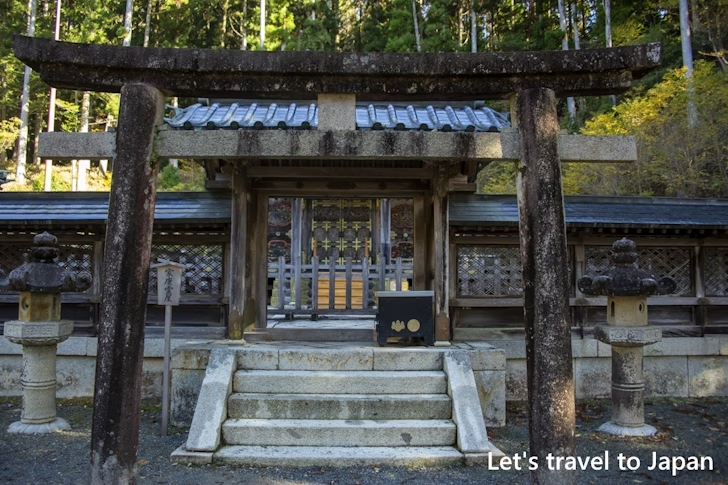
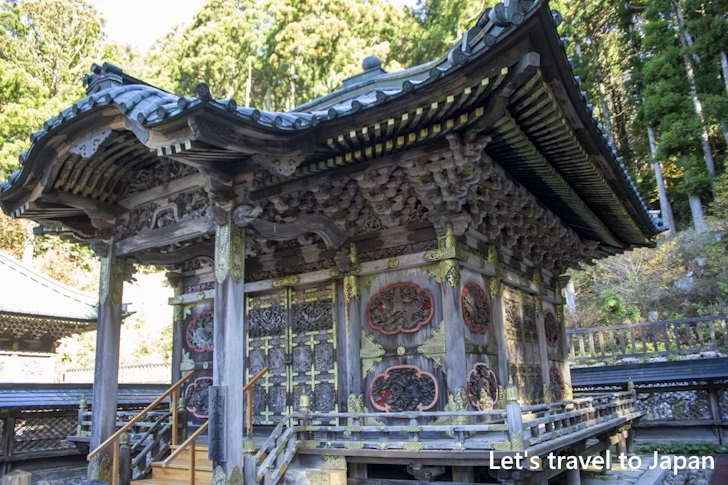
The mausoleum on the left side is for Hidetada Tokugawa.
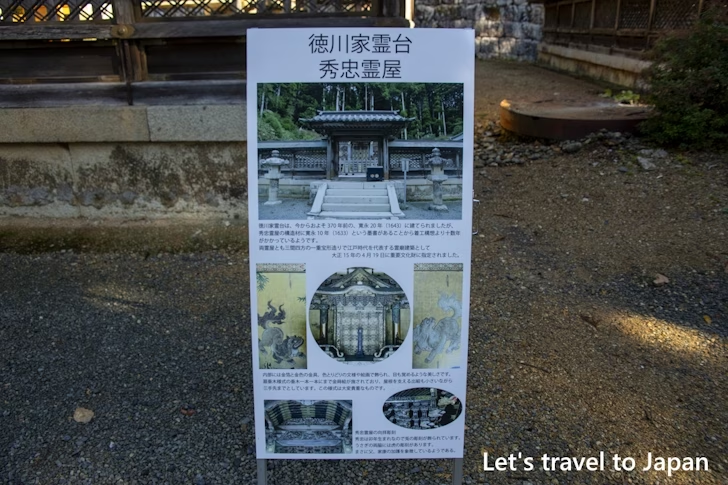
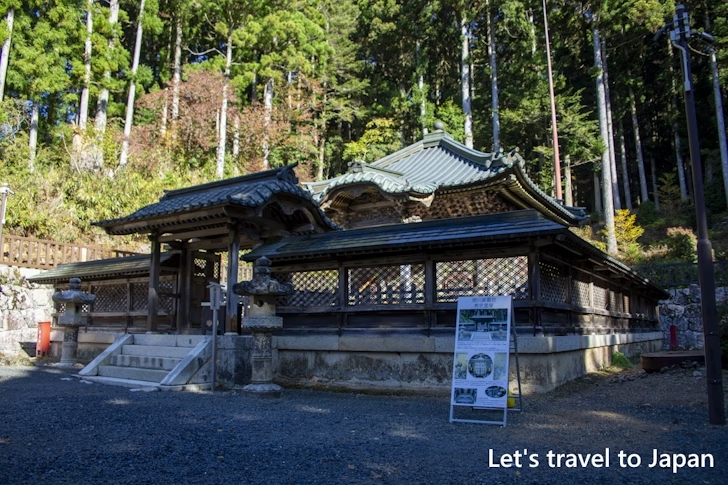
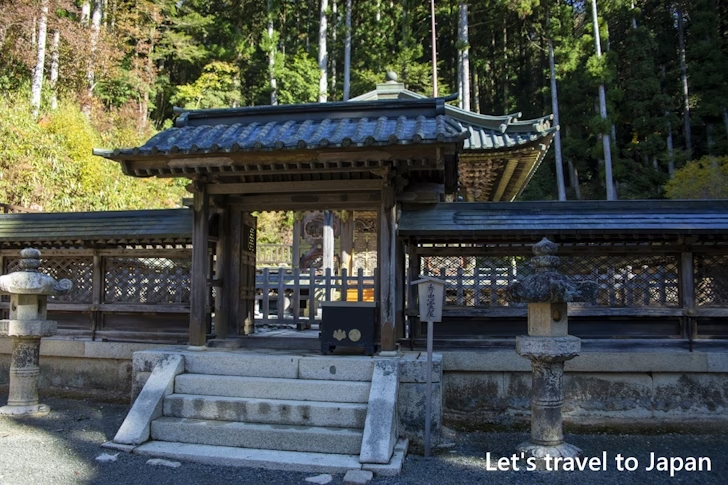
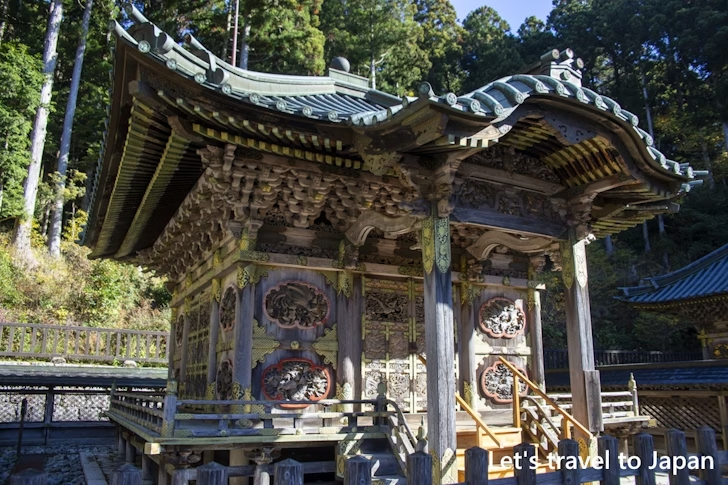
Mount Koya Taishi Kyokai
The Mount Koya Taishi Kyokai is the headquarters for the propagation of the Koyasan Shingon sect, as well as for the chanting of Goeika and religious dances. Experiences such as receiving Buddhist precepts (jukai) and copying sutras are also available.
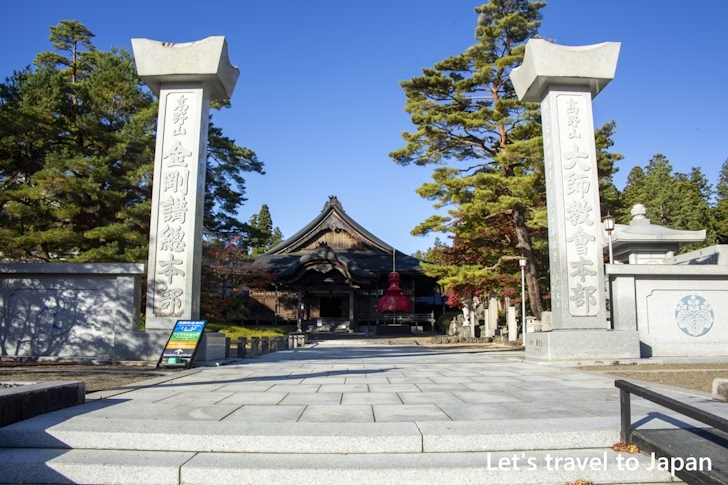
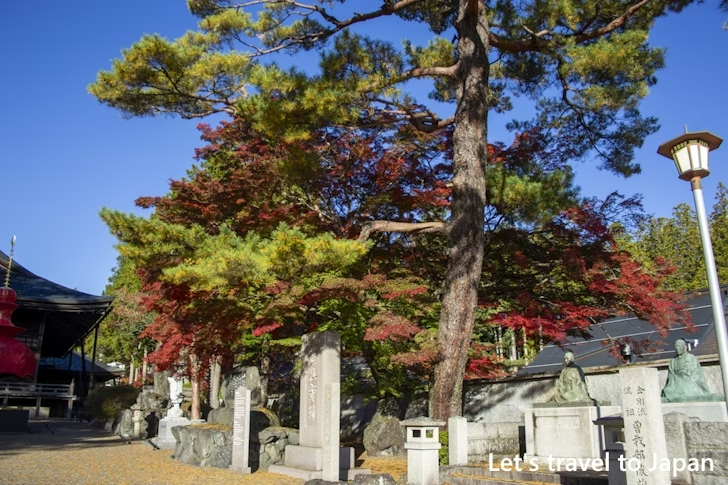
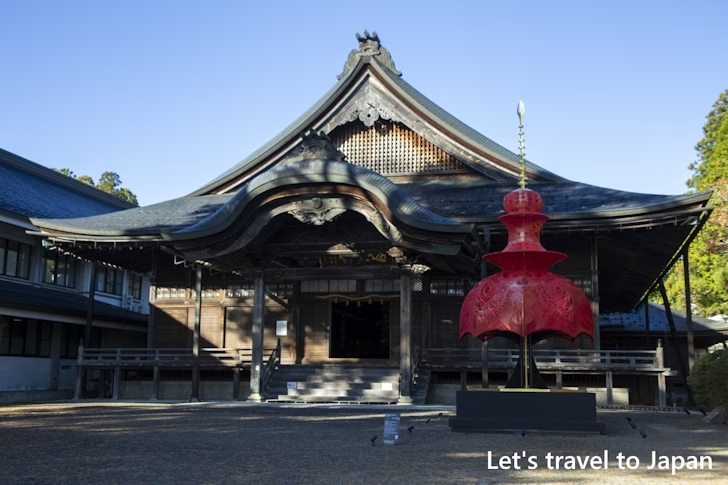
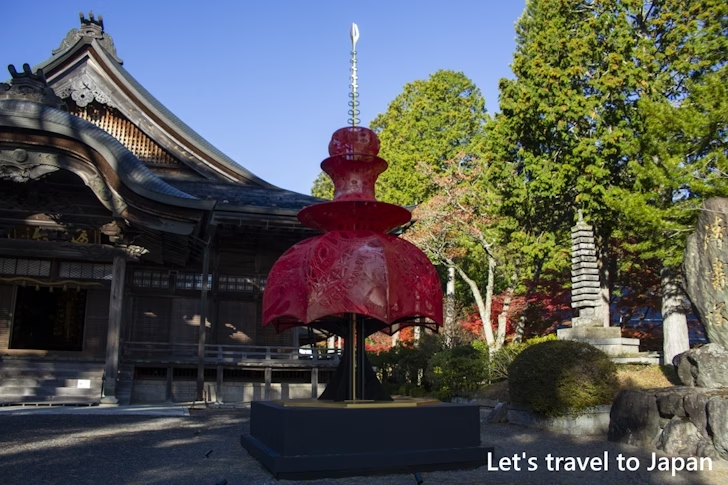
Autumn leaves at Koyasan
Koyasan is also known as a famous spot for autumn leaves in Wakayama Prefecture. The peak viewing period typically occurs from late October to early November each year. During the autumn foliage season, the Jabara-michi is also illuminated at night.
For more detailed information about Autumn leaves at Koyasan, please see 「Complete guide to the highlights of autumn leaves at Koyasan」.
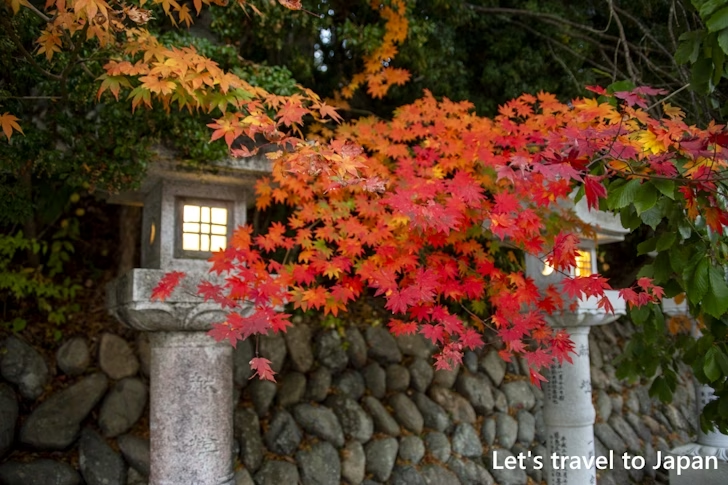
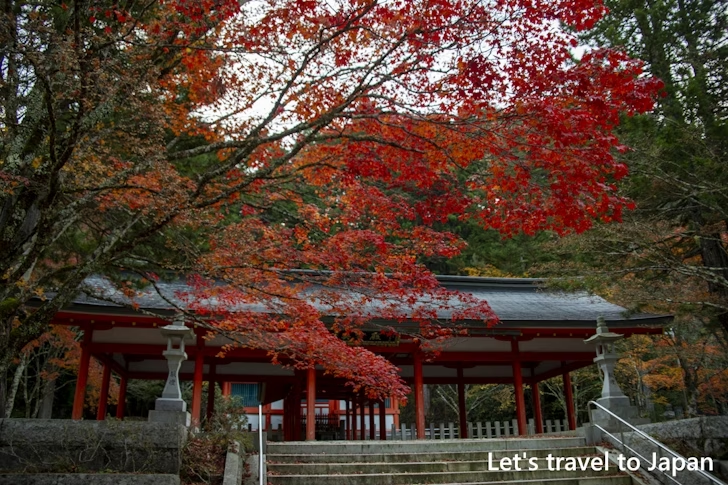
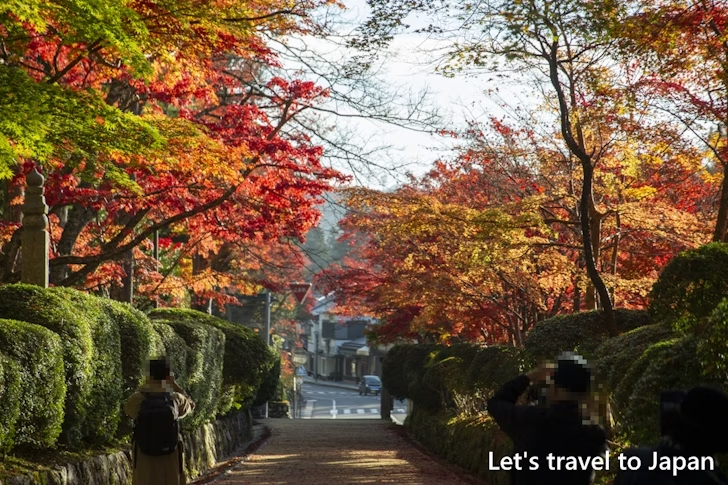
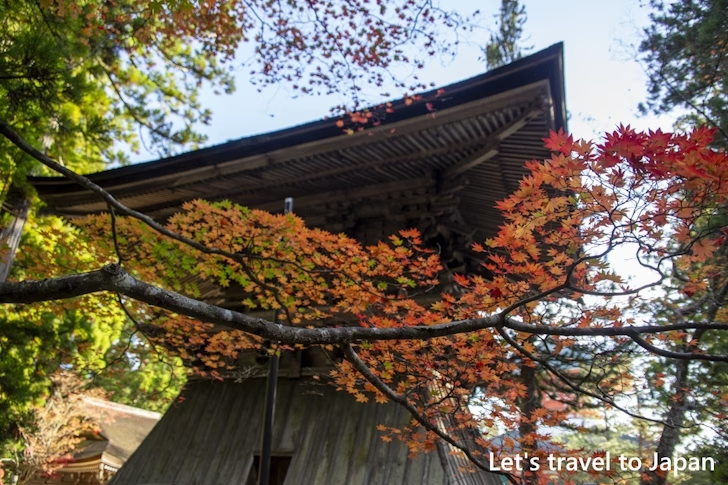
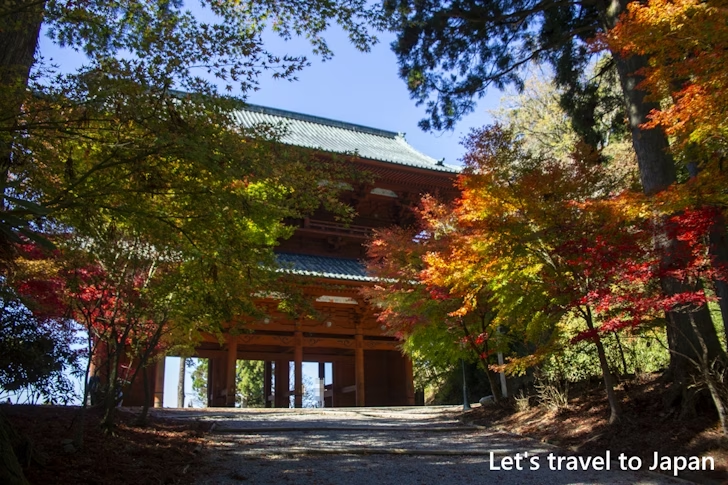
Snowy landscape of Koyasan
This is the snowy landscape of Koyasan.
For more detailed information about snowy landscape of Koyasan, please see 「Complete guide to the highlights of snowy landscape of Koyasan」.
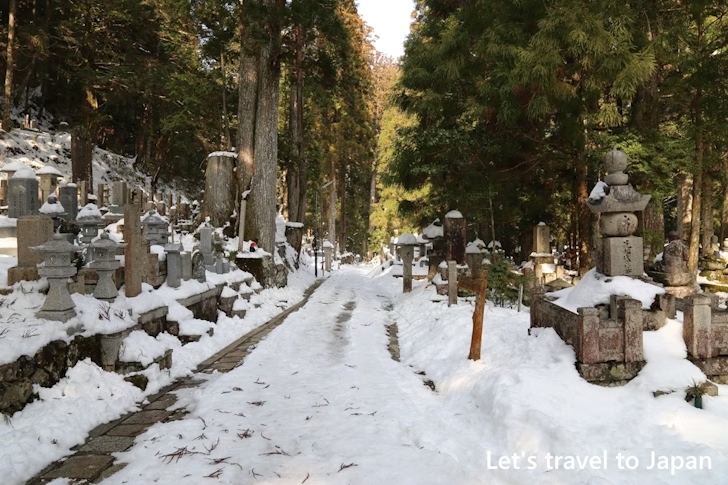
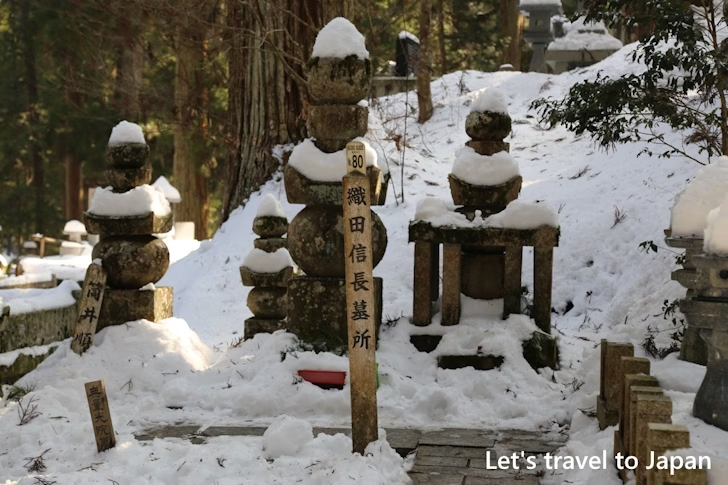
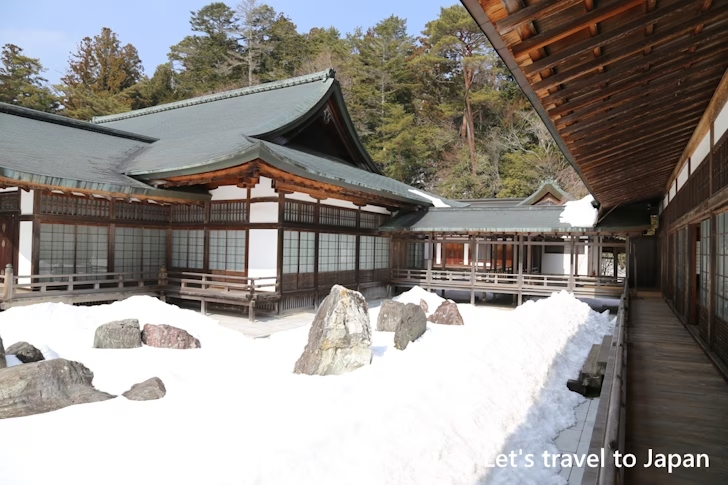
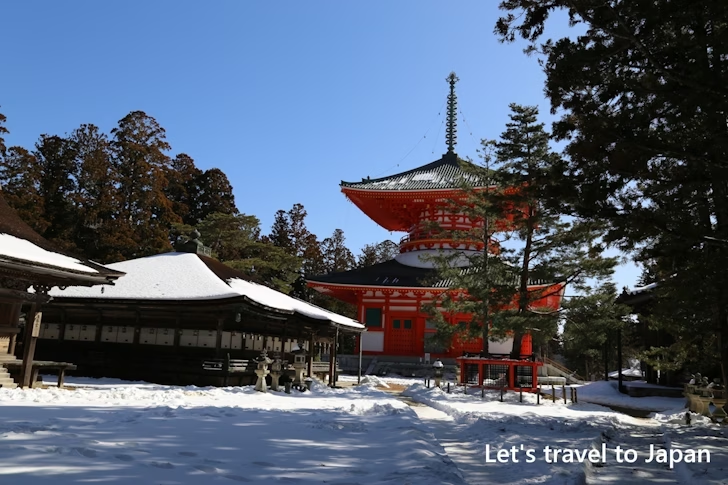
List of photos related to Koyasan
Please see below for a list of photos related to Koyasan.
Address and access method of Koyasan
Address of Koyasan
The address of Koyasan (Daimon) is "Koyasan, Koya Town, Ito District, Wakayama Prefecture".
Access method of Koyasan
I will explain how to get to Koyasan from Shin-Osaka Station.
OsakaMetro Midosuji Line
15 minutes
Walking
8 minutes
Nankai Electric Railway Koya Line
80 minutes
Nankai Electric Railway Koyasan Cable Car
5 minutes
Nankai Rinkai Bus(route map)
Koyasan parking lot
Koyasan has 10 permanent and 4 temporary free parking lots. For information on the location of each parking lot and the number of parking spaces available, please see 「Complete guide to parking at Koyasan」.
Attractions near Koyasan
Several other attractions near Koyasan are worth exploring:
Adventure World
Adventure World is a theme park in Wakayama Prefecture, combining a zoo, an amusement park, and an aquarium. In its popular 'Panda Love' facility, you can see many pandas up close. In the Safari Zone, not only can you see elephants, giraffes, lions, and other animals in a natural-like environment, but you can also experience feeding them. The dolphin shows in the huge stadium and the animal shows featuring various animals are not to be missed. In addition to these attractions, there are amusement park facilities, providing a full day of fun.
Other information about Koyasan
Official site about Koyasan :
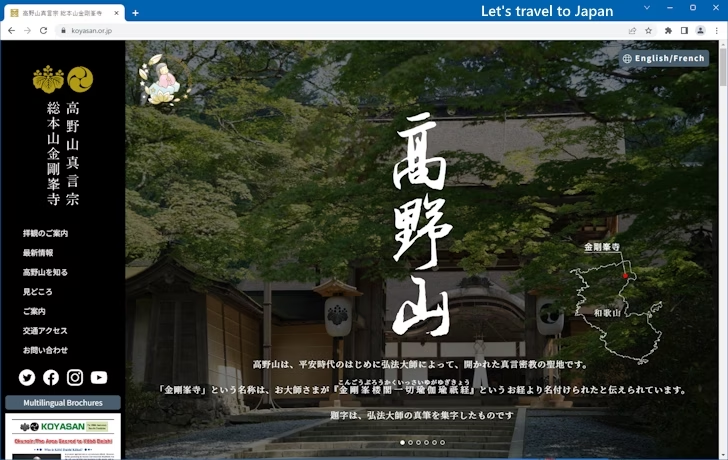
-- --
Thank you for reading to the end.
( Written by Tatsuo Ikura )